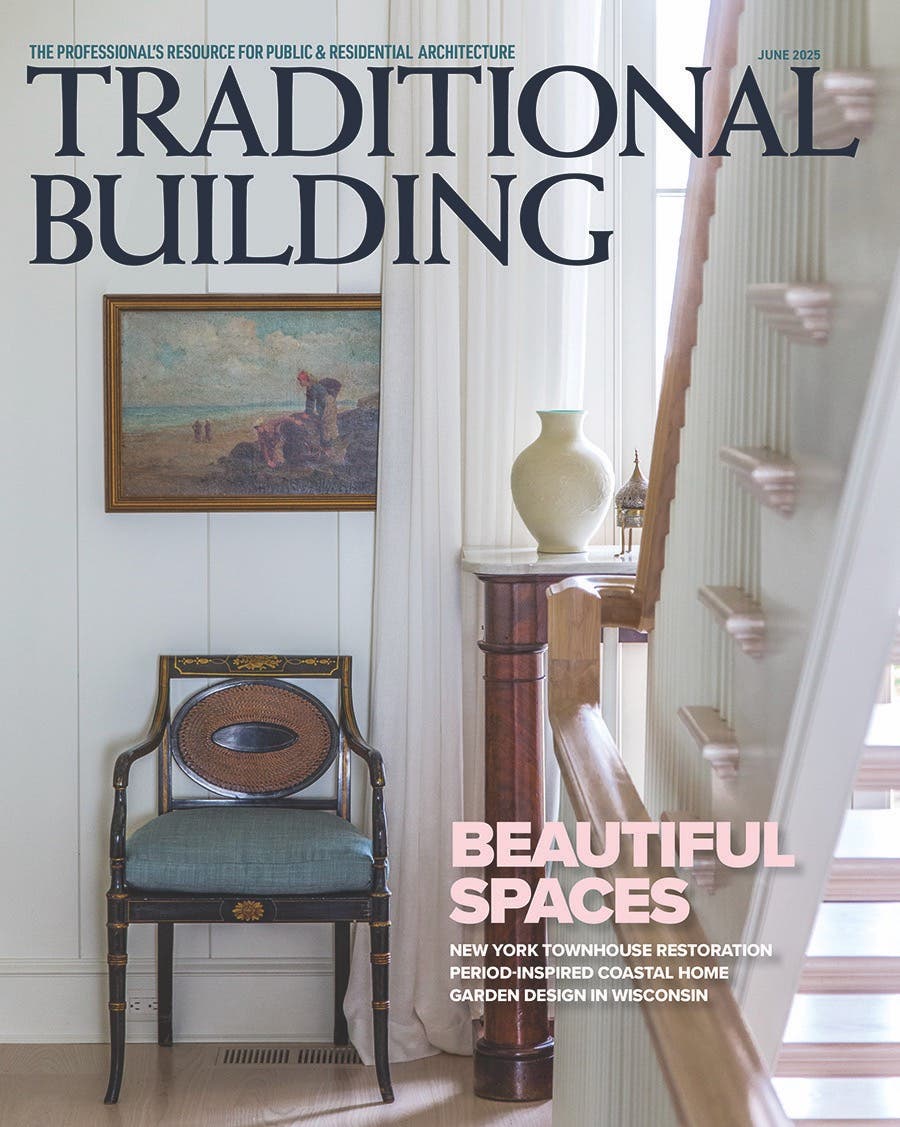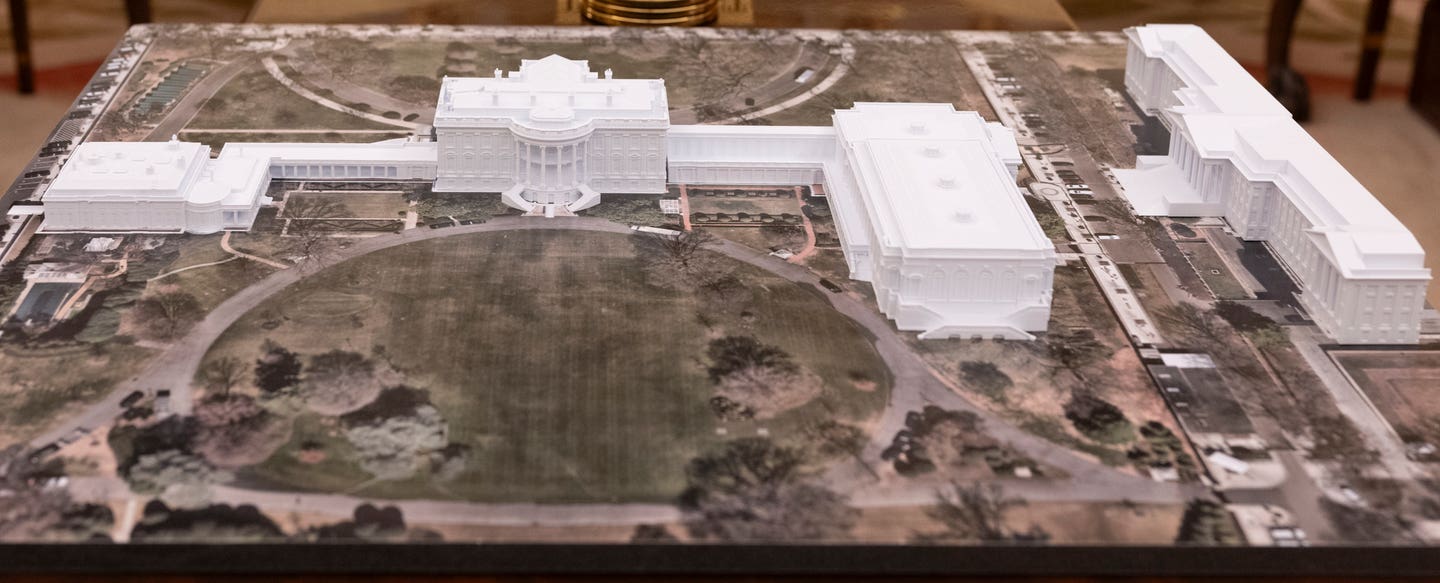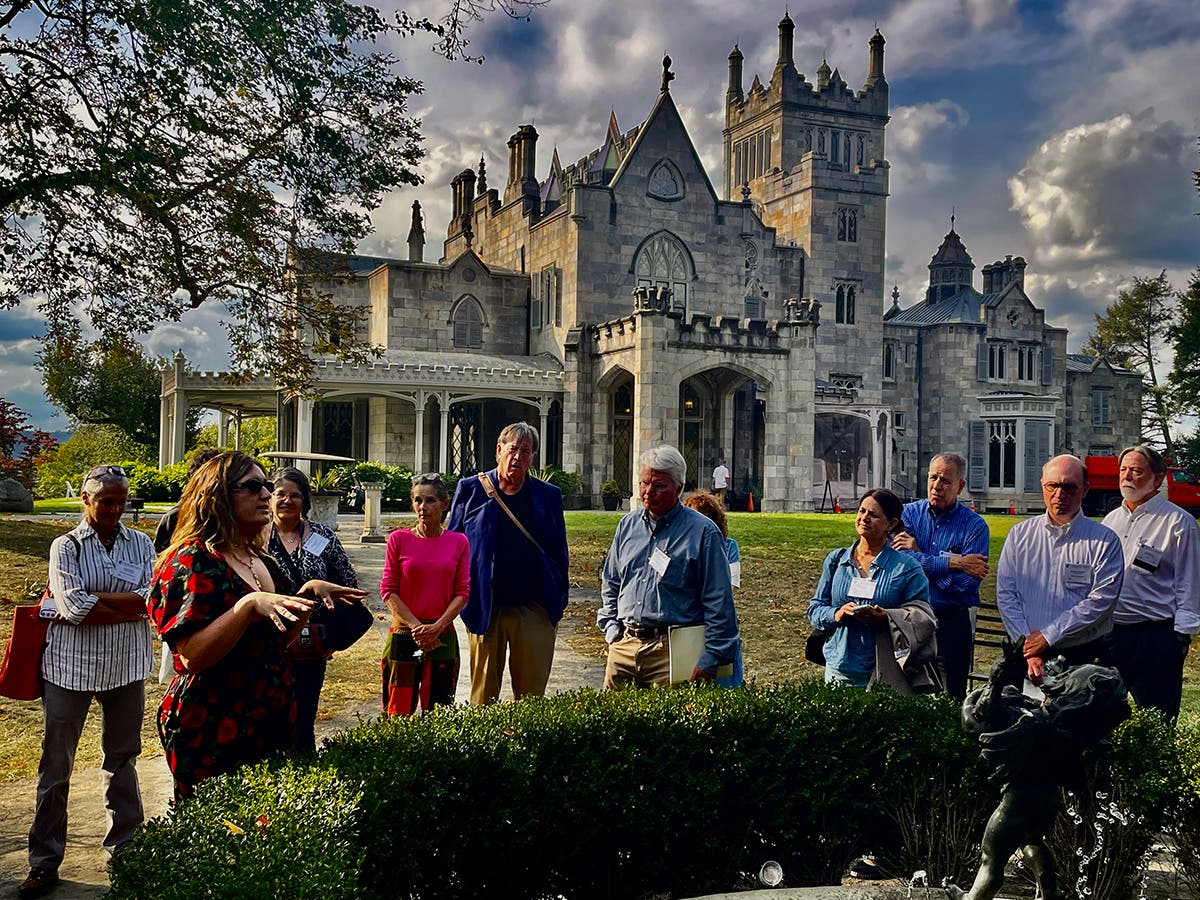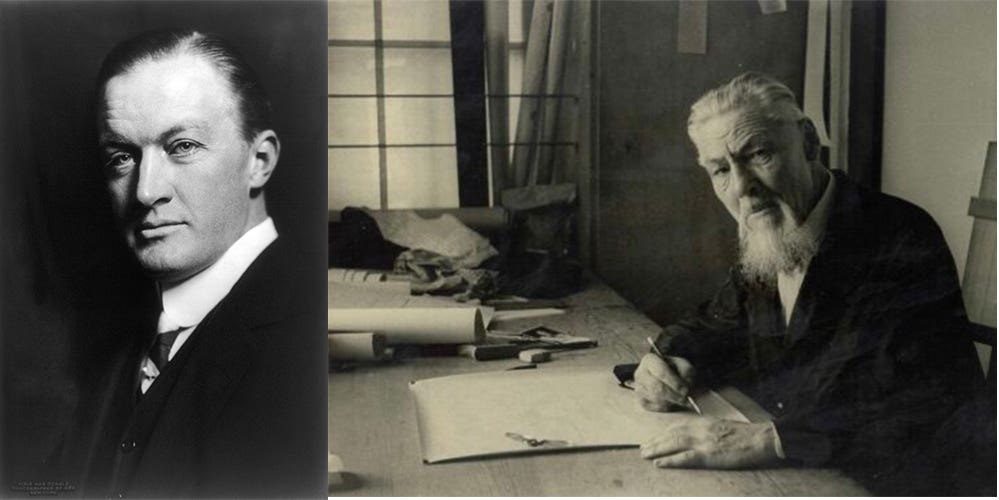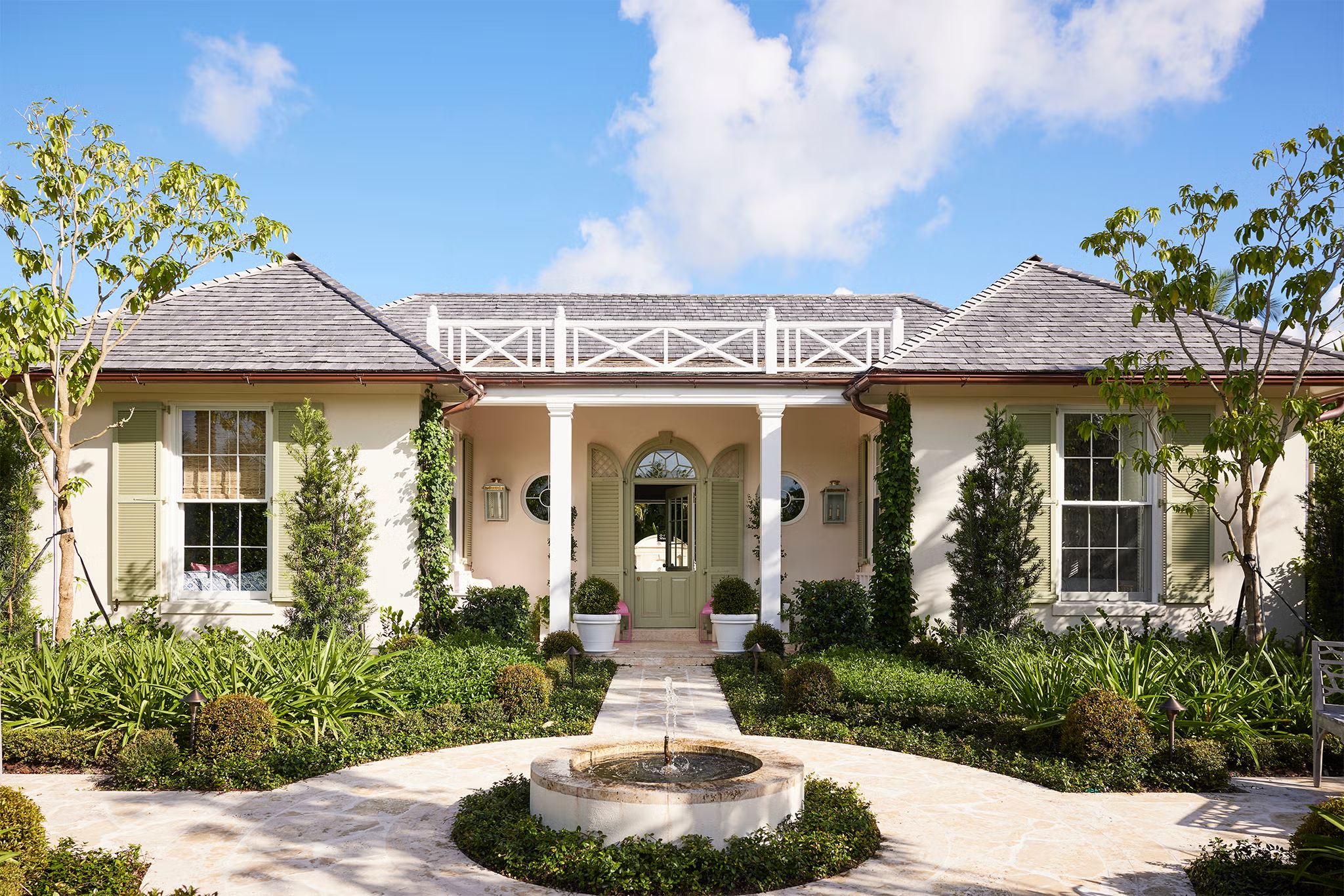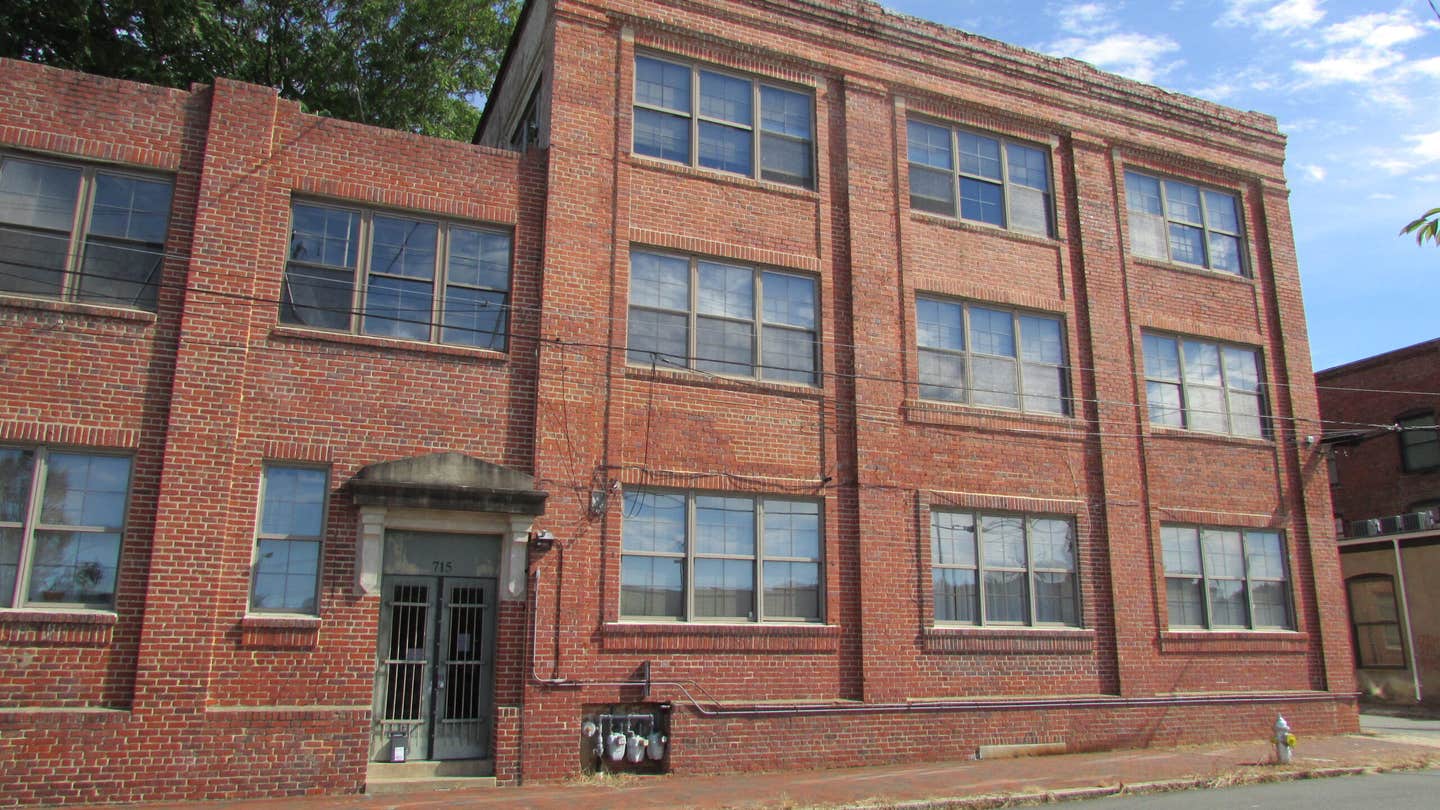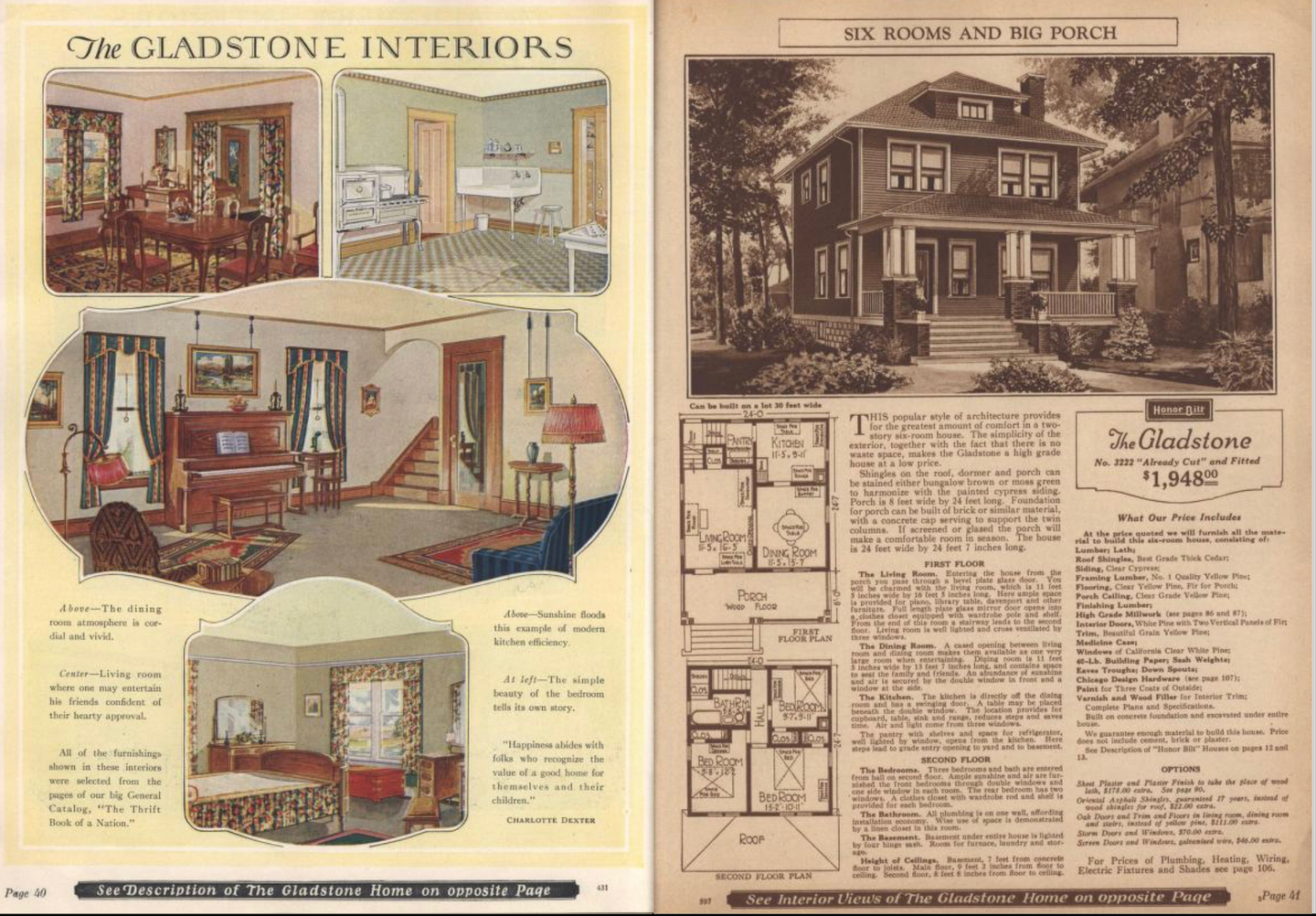
Peter Miller
Traditional Building’s Sibling Magazine, Old House Journal Celebrates Its 50th Year
I live in a 1924 Sears American Four Square, the “Gladstone” model, sold to the original owner from the Sears catalog for $1,900.00. From 1908 until 1940 Sears Roebuck Co. sold over 70,000 kit houses through their Modern Homes and Honor Bilt catalogs.
Sears designs for 370 different plans ranged from the “Goldenrod,” a three-bedroom vacation cottage with the bathroom in an outhouse, to the “Argyle” a more elaborate 1,008 square foot manse. My “Gladstone” has oak floors in the living room but cheaper (then) pine floors upstairs. The Sears name might sound cheap, but their houses have many high-quality details, especially the millwork and cedar lap siding.
The day I moved into my old house; my realtor gave me a complimentary subscription to OLD HOUSE JOURNAL. Back then, OHJ was a 32-page newsletter with notebook holes punched so you could save back issues in a binder. Each issue had articles about how to restore and repair old houses with information about hard-to-find old house parts and materials. I was young, an old house fixer-upper was all I could afford. OLD HOUSE JOURNAL was my D-I-Y bible.
Right after moving in, we refinished the wood floors, stripped old paint off woodwork and painted all the walls, replaced 1960s “remuddles” like ugly light fixtures and cheap hardware. We unstuck the original one-over-one double hung windows and repaired the window balance lead weights and ropes. Much of what we did was to un-do the things which were not original to the house. Over time we remodeled the kitchen and baths, turned two small bedrooms into one master suite, enlarged closets, installed a new roof and built two new sheds in the small backyard.
According to the National Association of Home Builders, 41% of millennial home buyers would prefer to own a NEW house, yet only 11% of home sales each year are new construction. The rest of the homes sold are existing homes, at least 30% of which are 50 years old or older.
According to the National Association of Realtors, the buyers of old homes love their charm and character, mature landscape, walkable neighborhoods and most of all, their affordability. The downside is outdated systems. My old house needed new wiring, central air and we switched from electric to natural gas.
With guidance from OLD HOUSE JOURNAL we were able to do these old house improvements over time, as we could afford them. And because of the desired neighborhood location, real-estate appreciation made it possible to borrow against the equity to pay for home improvements and additions.
I am your typical OLD HOUSE JOURNAL reader. The difference is, I went from being a subscriber to the owner of the magazine, twenty years after I bought my old Sears house. Editor Patricia Poore has never featured my house in OLD HOUSE JOURNAL, which is the sibling magazine of TRADITIONAL BUILDING, both founded by Clem Labine (Patty was Clem's first editor. She's still here after all these years!).
Do I love my old house because I am old? Do young people want young houses instead? Maybe, but they likely can’t afford them. Or, like me, they like old houses better, including the satisfaction of maintaining, restoring and improving them.
Judging by the number of new, old house TV shows and digital media platforms, including OHJ’s digital media, young home owners are engaging with information about the restoration and renovation of old houses. They buy an old house for the same reasons I did…their charm, character, quality of construction and location.
These five markets prove the point. They are all having a resurgence, with more young people moving there, buying and remodeling old houses.
On a “unit” basis, these five markets alone have as much construction demand potential as half of the new single family housing market. This does not include the more obvious, bigger cities with old house inventory like Chicago, Boston, New York, Washington DC and Seattle.
People say modern is in, traditional is out, that everyone wants shiny, trendy and new. That’s an oversimplification of market trends which the data does not support. The truth is, with over 80 million millennials, the largest home-buying population cohort in history, there is something of everything.
This includes the sale of old houses, well-built, ready for remodeling, purchased by people like me, when I was young.
Peter H. Miller, Hon. AIA, is the publisher and President of TRADITIONAL BUILDING, PERIOD HOMES and the Traditional Building Conference Series, and podcast host for Building Tradition, Active Interest Media's business to business media platform. AIM also publishes OLD HOUSE JOURNAL; NEW OLD HOUSE; FINE HOMEBUILDING; ARTS and CRAFTS HOMES; TIMBER HOME LIVING; ARTISAN HOMES; FINE GARDENING and HORTICULTURE. The Home Group integrated media portfolio serves over 50 million architects, builders, craftspeople, interior designers, building owners, homeowners and home buyers.
Pete lives in a classic Sears house, a Craftsman-style Four Square built in 1924, which he has lovingly restored over a period of 30 years. Resting on a bluff near the Potomac River in Washington, D.C., just four miles from the White House, Pete’s home is part of the Palisades neighborhood, which used to be a summer retreat for the District’s over-heated denizens.
Before joining Active Interest Media (AIM), Pete co-founded Restore Media in 2000 which was sold to AIM in 2012. Before this, Pete spent 17 years at trade publishing giant Hanley Wood, where he helped launch the Remodeling Show, the first trade conference and exhibition aimed at the business needs and interests of professional remodeling contractors. He was also publisher of Hanley Wood’s Remodeling, Custom Home, and Kitchen and Bath Showroom magazines and was the creator of Remodeling’s Big 50 Conference (now called the Leadership Conference).
Pete participates actively with the American Institute of Architects’ Historic Resources Committee and also serves as President of the Washington Mid Atlantic Chapter of the Institute of Classical Architecture & Art. He is a long-time member of the National Trust for Historic Preservation and an enthusiastic advocate for urbanism, the revitalization of historic neighborhoods and the benefits of sustainability, including the adaptive reuse of historic buildings.


